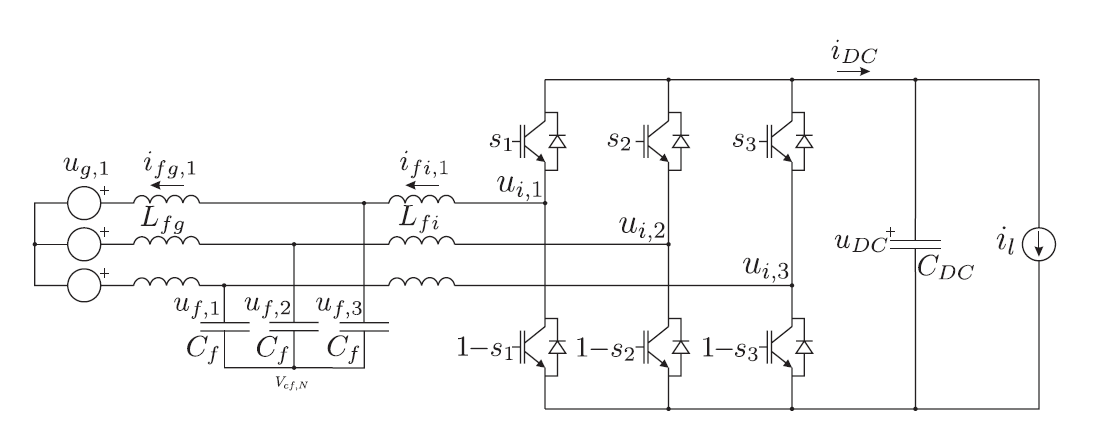Active front ends
Active front ends are grid interface converters that have two main functions:
- transfer power from an energy source to the utility grid,
- transfer power from the utility grid to a load.
In renewable energy production, the power converter transform the energy in a form that allows to carry and/or use it. It also allows to optimize the energetic efficiency of the energy source. Photovoltaic solar panels and fuel cells produce a DC voltage that needs to be converted to an AC voltage to be injected on the AC utility grid. Current drawn from the photovoltaic solar panels must be controlled in order to obtain the highest possible energy production and thus the highest energetic efficiency. Wind turbine rotation speed varies with the wind speed and a power converter is necessary to allow energy transfer from the AC generator to the grid.
When energy is flowing from the grid to the load, diode rectifiers are replaced by active front ends when a unity power factor, high power quality and/or a regenerative capability is desired.
Research objectives and methods
Some of the control challenges in active front ends are:
- inject or draw current with low distortion, even when the grid voltage is distorted or unbalanced
- minimize the grid voltage distortion
- fast dynamic response to transients
- high power factor
Our research mostly focuses on addressing these challenges for grid inverters with LCL filters using model predictive control (MPC) with hybrid or linear models. Another approach investigated to reducing distortion is through optimising the filter components.

Related publications
- A model predictive control approach to reducing low order harmonics in grid inverters with LCL filters
- Sampled Data Model Predictive Control of a Voltage Source Inverter for Reduced Harmonic Distortion
- Two-stage optimization procedure of LCL filters for the design of high-efficiency grid inverters
- A new strategy for optimal PWM applied to single phase inverters with variable DC voltage
- Explicit Model-Predictive Control of a PWM Inverter With an LCL Filter
- Analysis and optimal current control of a voltage source inverter connected to the grid through an LCL filter